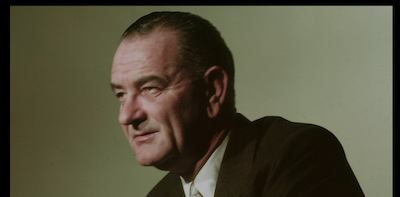By Dan Norwood
The Civil Rights Act of 1964, which prohibited discrimination in employment based on race, color, sex, national origin or religion did not prohibit age discrimination in employment. While efforts were made in Congress that year to also make age an unlawful basis of discrimination in the Act, that effort failed. It was not until three years later that age discrimination was declared illegal in the Age Discrimination in Employment Act of 1967. When President Lyndon Johnson signed that law into effect, he said its purpose, like our other discrimination laws, was to “gain a triple benefit — for the employer who gets the best employees to do a job — the employee who gets equal opportunity to get hired for the best job – and for our country that gets the most successful companies and citizen employees.”
Today there are 75 million Baby Boomers who were born between 1946 and 1964 and almost thirty million of them are still in the workforce. An AARP report projects that by 2022 nearly 35% of workers will be age 50 or older. Many of those older workers will continue to work into their 70’s.
America has made great progress over the past half century towards attaining our goal of ensuring equal employment opportunities for all Americans. Our most recent efforts to continue working towards this goal are called “diversity and inclusion” programs. Unfortunately, though, a 2015 PricewaterhouseCoopers survey of CEOs in 77 countries found that, while 64 percent had a diversity and inclusion strategy at their company, only 8 percent of those plans included age. Clearly, just like we have made remarkable progress in ending discrimination against non-whites, females and the disabled, we need to now do more to make similar progress in ending discrimination against our older citizens who are still working or who desire to continue working.
Age Discrimination in Employment Is Rampant in America Today and Older Americans Know It
A 2018 AARP report said that 3 in 5 older workers said they have seen or experienced age discrimination in the workplace and 76% said they see age discrimination as a hurdle to finding a new job. Many employers apparently do not understand that workers have this perception because they continue to include outright discriminatory language in job postings, like ads seeking “recent college graduates.”
The Ease of Proving Pretext in Age Discrimination in Hiring Cases and The High Cost of Age Discrimination in Hiring
Proving the reason an employer gives for not hiring an older applicant is a pretext is often easy. For example, one case I handled involved a 72-year-old long-haul truck driver who was working for a trucking company at the time he applied for a job with another trucking company because it paid more. After he did not get hired, he called the recruiter and asked him why he was not hired and was told the reason was that the company hired applicants who were better qualified. He spontaneously asked the recruiter how anyone could have been better qualified than him because he was currently working as a driver and had five million safe driving miles during his fifty-year driving career! After a lawsuit was filed, personnel records revealed the company had hired eight new drivers, all under thirty-five years old. Since none of them had near his experience or good record, the company paid my client $120,000.00 in a confidential settlement to end the case.
Another example of how easy it is to prove an employer’s claimed reason for not hiring an older applicant is a pretext or sham is found in the last jury verdict I won against an employer for age discrimination in hiring. The case is Dennis Vawter v. E. I. Du Pont De Nemours and Company. The verdict, which was appealed by the company and affirmed on appeal, reveals how hard it is for an employer to hide its real reason for not hiring an older applicant.
The plaintiff in the DuPont case applied for a Chemical Operator position at a DuPont’s chemical plant after he lost the Chemical Operator job he had held for 37½ years at Velsicol Chemical Corporation prior to that company closing its Memphis plant. He was 59 years old when he applied for the DuPont position. Out of 421 applicants, DuPont’s managers interviewed 34 and hired 12 to become Chemical Operators. Notably, one of the individuals hired was almost twenty years younger than Mr. Vawter and had also worked at Velsicol, but only for two years compared to his 37½ years. All of the eleven other individuals who were hired were much younger than Mr. Vawter and four of them had never worked in a chemical plant.
Finally, the high cost of getting caught discriminating against older applicants in hiring is revealed in the DuPont case. The case was brought in state court under the Tennessee Human Rights Act because, unlike the ADEA, that law allows the jury to award not just lost pay and benefits but also compensatory damages for mental distress, humiliation and embarrassment, and loss of enjoyment of life caused by the discrimination. The jury awarded Mr. Vawter $100,000.00 in compensatory damages. More importantly, the judge also awarded him front pay for a period of three years totaling $112,120.00, plus his attorneys fees totaling $96,000.00. This verdict sends a clear message that an employer that allows its management to engage in age discrimination in hiring should expect to pay a large sum for its wrongdoing.
A Broader Diversity Inclusion Program Must Be the Goal
Unfortunately, too many employers that engage in ageism in their hiring still fail to understand that older workers possess a depth of skills and knowledge that is worth paying for. Failing to end ageism hurts employers who, as a result, may be hiring the “second best” person for a job. As a SHRM Foundation Executive Briefing stated: “To reap the benefits of a productive age-diverse workforce, organizations need to move beyond outdated and limiting beliefs about older workers.” Any human resources professional who fails to upgrade their employer’s Diversity and Inclusion Program to include ending ageism will not only miss the opportunity to hire the “best” person for every job but will also risk their employer having to pay the high cost of being found guilty of age discrimination in hiring.
Ending Age Discrimination in Hiring and The Role of the Courageous Human Resources Professional
The main way to end discrimination in hiring is to enforce our laws prohibiting discrimination in employment based on age. The First Enforcer for all of our employment discrimination laws is not, as many assume, our state and federal employment discrimination agencies. Neither is it Plaintiff employment lawyers, like me.. The First Enforcer is the competent and courageous human resources professional working on the front lines of the hiring process at a public or private employer.
That human resources professional must never forget that his or her duty is to the enterprise, not to the individual managers or executives who may want to engage in unlawful discrimination. They must have the courage to tell those individuals they cannot engage in such discrimination. If that human resources professional fails to do so, then discrimination may raise its ugly heads during the hiring process. By showing such courage, not only will the time and major expenses that come with discrimination lawsuits be avoided, but the human resources professional will be ensuring that the enterprise is hiring the “best” person for a job.
Admittedly, showing such courage carries a risk. While I call myself the Working Boomer Advocate because I am mainly focused on being an advocate for victims of age discrimination, sometimes I have to call myself the Human Resources Professional Advocate. One such case I handled a few years ago was for the Human Resources Manager of a trucking company who had been directed by the company’s Vice President not to hire any drivers over age fifty because she believed they were more likely than younger drivers to miss work due to health problems.
Knowing that to follow such a directive would constitute unlawful age discrimination, this courageous Human Resources Manager disobeyed the directive and hired a 58-year old applicant who had an excellent twenty-five year driving record, Unfortunately for her, this older driver had a heart attack on the job one month later and died. When the Vice President who had instructed her not to hire anyone over age 50 learned that this older driver had been hired contrary to her instructions, she fired her on a shallow pretext. Soon after I filed a retaliatory discharge lawsuit, a settlement was reached. Remembering this story always reminds me of the critical role human resources professionals continue to play in helping citizens, employers and our country be able to reap the triple benefits promised with the passage of the Age Discrimination in Employment Act in 1967.

Working Boomer Advocate
dan@workingboomeradvocate.com
